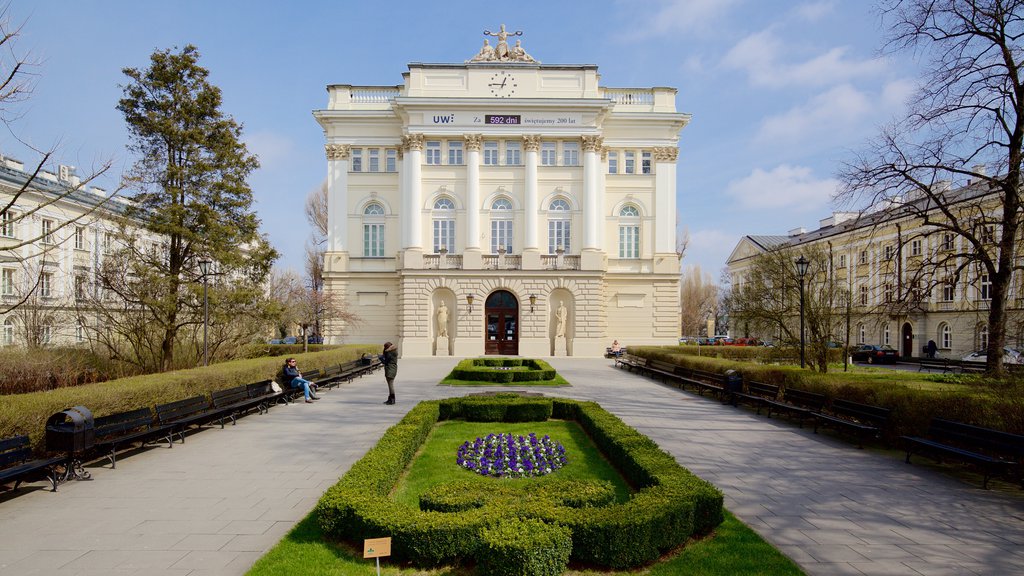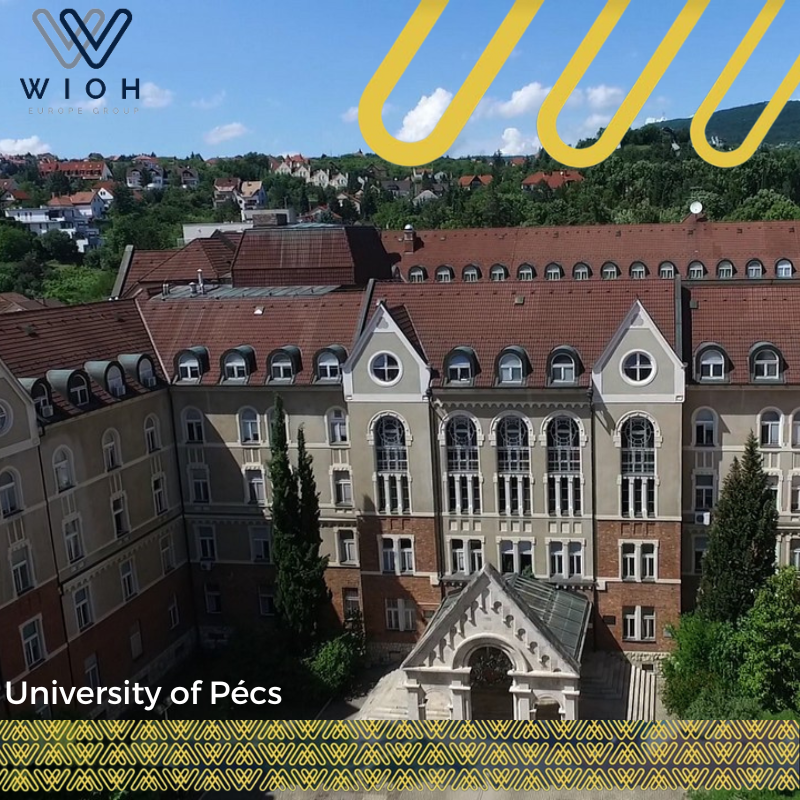When you want to study in Poland, you must choose a university that matches your goals, and if you want the best and the finest, your choice must be the University of Warsaw

University overview:
The University of Warsaw is the largest university in Poland and one of the most prestigious in Poland.
The history of the university itself dates back to 1816, when it was founded by decree of the Russian Tsar Alexander I.
This first iteration of the institution lasted only 15 years before it closed, amid the growing clamor for Poland’s independence from Russia. Amid temporary liberalization, the university reopened in 1862, but was subsequently closed in 1869 and replaced by the Imperial University of Warsaw, a Russian-language institution.
The Polish university was not reopened until 1915, this time under German rule and subsequent independence. The university was closed again under Nazi rule in World War II, but many academics risked their lives to continue their education in secret.
The heart of the university is still the main historical campus, in the center of Warsaw, which houses buildings dating back to the 17th century.
Warsaw is an international university with thousands of foreign students, researchers and academics, including those participating in the European Union’s Erasmus programes. Approximately 60,000 people study at UW each year. A wide range of courses are offered to candidates in the fields of humanities, social sciences, and natural sciences, as well as many interdisciplinary courses.
The leading concepts of the university’s activity are the unity of teaching and research, the harmonious development of all branches of knowledge represented in its curricula.
While most of the teaching is in Polish, the university offers more than 20 programs taught in English, including economics, business and political science.
The university employs 3,500 researchers. The university’s research teams participate in more than 150 programs annually funded by the European Union and grants from international institutions and research institutes.
The University of Warsaw has 3000 foreign students: undergraduates, doctoral students, staff and fellows, among others, from Erasmus programes.
In terms of academic exchanges, UW stands out not only in Poland, but also at the international level, being one of the leaders of the European Commission classification. Five Warsaw alumni have won Nobel Prizes, including physicist Joseph Rotblat and former Israeli Prime Minister Menachem Begin. Other notable alumni include composer Friedrich Chopin and David Ben-Gurion, the founding prime minister of Israel.

What distinguishes the Warsaw University building?
Main Campus:
Krakowskie Przedmieście Street – This address is familiar to everyone associated with the University of Warsaw, it is the main campus.
This historical patch is one of the most charming areas of Warsaw. The beautiful carvings that decorate the buildings and the greenery around them make the campus one of the most interesting and often visited sites, and a favorite of both tourists and residents of Warsaw. The main campus and its vicinity are primarily home to the Colleges of Humanities and Social Sciences.
main gate
The drive to the campus from Krakowskie Przedmieście is one of the main symbols of the university. The university’s emblem was placed on it in October 1916, five years after it was built; It is a crowned eagle surrounded by five stars, which symbolizes the university’s top five faculties: Law and Administration, Medicine, Philosophy, Theology, Fine Arts and Sciences.
The portal niches contain statues of Athena and Urania, the first holding a helmet and the other a globe. Thus, upon entering the Warsaw University campus, we find ourselves under the protection of the Gods of wisdom and knowledge about the universe.
Old library:
It was built in 1894. It was very modern for its age, the library was able to hold 750,000 volumes, and the large storage space resembled a huge iron grid.

The venerable building was emptied in 1999, when the new main library in Powiśle opened. After that it was completely rebuilt; In fact, the building now merges architectural modernity with tradition. Currently it contains lecture rooms.
Fragments of the impressive steel construction are still visible in the library’s former storage space. An interesting fact is that during the Second World War, Cheslav Meuse, the future Nobel laureate, worked in the old library as a janitor.
Kazimierzowski . Palace

The oldest building of the university was erected before 1643. Standing on the edge of the slope heading towards the Vistula River, it was initially the summer residence of the Kings of Poland: Władysław IV, Jan Kazimierz, who gave the palace its name, and Jan III Sobieski.
In the 18th century, King Stanisław Augustus Ponatowski put the entire property to a completely different use. Instead of being a residence, the palace became the home of the Nobel School, an academy for young gentlemen. The building was handed over to the Board of Education Authority only in 1808.
The palace was bombed and burned down in World War II. Reconstruction work was completed in 1954; The architect modeled the restoration on design drawings dating back to California. 1820, and today it is the headquarters of the university authorities.
lecture hall:
The dates are from the interwar period. World War II left it in ruins, and the main lecture hall was used as stables. It was rebuilt in the fifties of the last century. Four beautiful Ionic columns on the main entrance balcony give it a neoclassical feel. The building contains offices and the largest lecture hall in the university, which can accommodate approximately 1,200 seats.
Warsaw University Library
The building is located near the Vistula Bank. Since its opening in 1999, it has been one of the greatest architectural and tourist attractions in Warsaw. The combined collections of the University Library and forty-seven other college libraries comprise more than 5.8 million volumes. The library receives 3,500 visitors per day, which is more than one million visitors annually. It is also a venue for exhibitions and other cultural events.
The library also contains one of the largest roof gardens in Europe.

Ochota Campus
It is home to research units that conduct interdisciplinary research of particular interest to medicine, environmental protection, industry etc. It also develops new materials: chemical bonds and compounds that find applications in pharmacology, materials science and nanotechnology.
Służewiec Campus
To the south, the Służewiec University campus is home to the Faculty of Management and part of the premises of the Faculty of Applied Linguistics.
Faculties:
The university campus includes 24 colleges:
Faculty of Applied Linguistics/Faculty of Applied Social Sciences and Resettlement/Faculty of Archeology/College of “Artes Liberales”/Faculty of Biology/Faculty of Chemistry/Faculty of Culture and Arts/Faculty of Economic Sciences/Faculty of Education/Faculty of Geography and Regional Studies/Faculty of Geology/Faculty of History/Faculty of Journalism and Information and Book Studies/Faculty of Law and Administration/Faculty of Management/Faculty of Mathematics, Informatics and Mechanics/Faculty of Modern Languages/Faculty of Oriental Studies/Faculty of Sociology/Faculty of Philosophy/Faculty of Physics/Faculty of Polish Studies/Faculty of Political Science and International Studies/Faculty of Psychology
Study Programs:
The university offers more than 100 bachelor’s and master’s programs unified in the Polish language in the humanities, social, exact and natural sciences as well as many interdisciplinary programs that combine knowledge and skills in various fields
22 dual degree programs run by UW and international partners
27 programs in English






